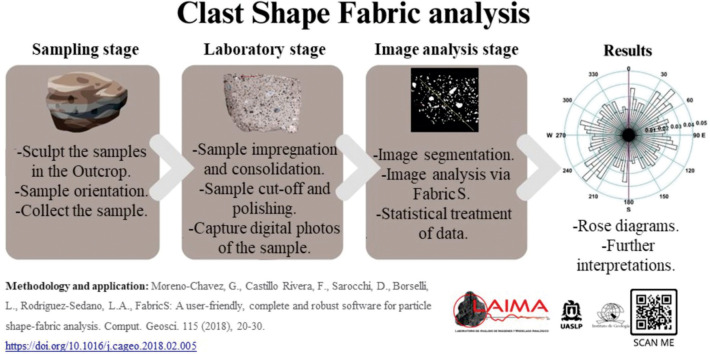- Record: found
- Abstract: found
- Article: found
Clast shape-fabric analysis: A comprehensive and efficient methodology to measure particle-orientation data in solid and loose volcaniclastic deposits

Read this article at
Abstract
Fabric analysis is essential for understanding the evolution of volcaniclastic deposits. Here we present a comprehensive and efficient methodology, called “Clast shape-fabric analysis,” which is part of the Quantitative Textural Analysis (QTA). This methodology combines high-resolution image analysis techniques with geospatial data processing tools.
The fabric of a deposit refers to the three-dimensional orientation of the particles with respect to space, where the degree of iso-orientation of the major axes of the particles is taken into account. The process begins with the collection of oriented samples in the field. Then, in the laboratory, the samples are processed to obtain high-resolution images. The final stage involves the analysis of these images using the FabricS program, which combines image processing techniques and circular statistics.
An application of the method was made at the Joya Honda Maar in Mexico, where shape-fabric analysis was used to identify the emission centers of pyroclastic materials.
In summary, the “Clast shape-fabric analysis” is a reliable, low-cost and high-potential methodology that can be applied in several geoscientific disciplines and other areas of scientific research.
Graphical abstract
Related collections
Most cited references32
- Record: found
- Abstract: not found
- Article: not found
Rock magnetism and the interpretation of anisotropy of magnetic susceptibility
- Record: found
- Abstract: not found
- Article: not found
Fabric analysis using the intercept method
- Record: found
- Abstract: not found
- Article: not found
